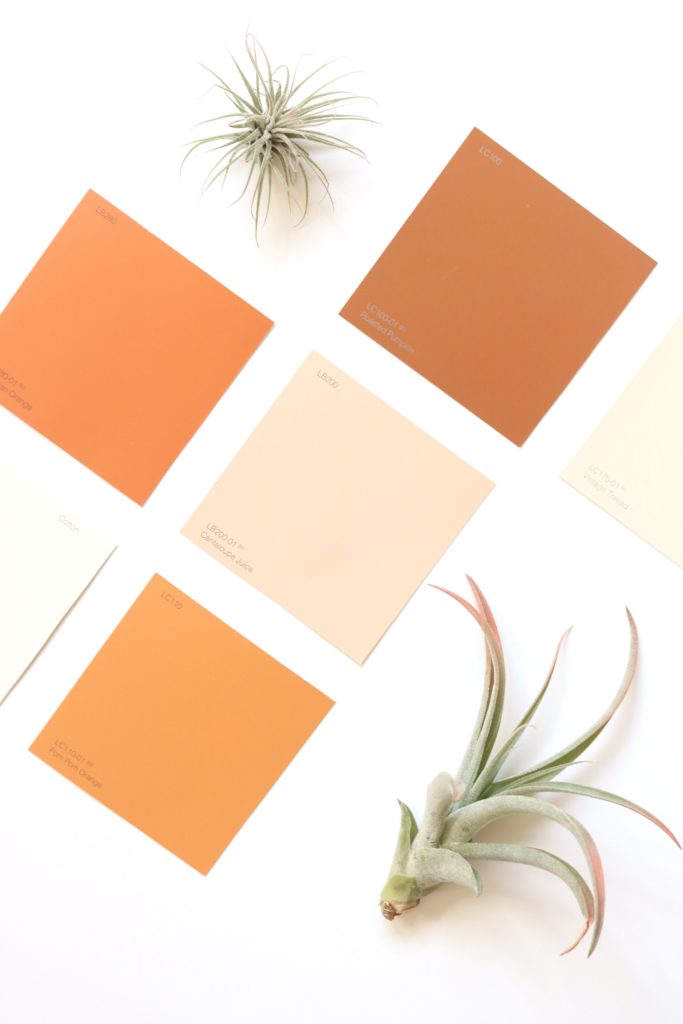There you are, at the store, staring at a wall of paint color samples in every shade imaginable and simply overwhelmed by the choice. Even if you thought you knew exactly what you wanted, the reality of seeing all of those chips somehow manages to undermine your certainty.Getting started is often half the battle so we hope you’ll find these tips helpful in getting your project started on the right foot and most importantly—absolutely loving your color choice.
Mistake #1: Picking a Color Solely From a Chip In store
First and foremost, you should plan to visit the paint counter at least twice for every project. Why? Because you’ll need to have a few options mixed up in color samples before you decide on the color for the project. Even if you find a chip that you absolutely adore you should still pick out a few alternatives and bring them home with you and compare them in your actual room with the actual lighting. A paint chip viewed in the aisle of your local paint store can’t convey how it will look on all four walls at various times of the day. The same rule applies for a color you have seen used in another home. The exact same color sample from the store can look drastically different in your own home.
Mistake #2: Only Trying One Shade Per Color
Even within very similar chips, the different undertones can have a big difference. That pale yellow shade that looked perfect on the chip might be too bright on the wall, but if you had tried a similar shade a few chips over, it would have been the perfect butter yellow you imagined. Once you’ve narrowed it down to one or two colors, it’s a good idea to try a few different varieties of those colors so you can pick the perfect one.
Mistake #3: Being Afraid of the Dark
A deep shade can seem scary—it’s often a dramatic change or you might be worried it will make your space seem smaller. Test it! One of the biggest regrets can be putting in all that work just to realize you went too light. For example, most beautiful grays are in the middle or dark ends of the chip—very pale grey paint colors can look a lot like a dingy white once on the wall. Don’t shy away from the darker shades—especially in neutrals, the results can be gorgeous.
Mistake #4: Testing Tiny Swatches
So you heeded the advice and brought home a few color samples to test. Use them! Don’t paint a 5-inch swatch and expect to get the full effect. Cover as much area as you reasonably can so when you decide if the color is right for you, you’re getting a look of it closer to the scale of the final result. Then do a second coat. Big swatches also allow you to get a better sense of what the color will look like under different lights. One shade might look better or worse during the day or night. You really want to kick the tires on this one. It only takes a few more minutes to paint a large swatch instead of a small one, and it’s so worth the effort.
Mistake #5: Deciding When the Paint’s Wet
It’s hard to be patient, but a few hours of drying time is absolutely worth the wait. After you have those samples up, let them dry completely before making your final decision. Some paint colors look remarkably similar when dry vs. wet, but some can take on a much different look after they’ve dried. After you’ve gone through the effort of putting up your big swatches, this is no time to rush. Go grab a cup of coffee before you come back, and then pick your favorite.
So there you have it—the top 5 mistakes that can easily be avoided when choosing paint colors. Hoping your next trip to the paint counter is a little less stressful.
FIND THE RIGHT COLOR FOR YOUR PAINTING PROJECT
Color Picking Tips
Picking a paint color can be stressful, here are some tips that may help ease that decision
Using Paint Chips
Learn about all the information you can gather from these little chips. Paint chips are another term for color sample. Here are some fun ideas of what you can use the leftover ones for!
Will my Paint Colors Look Different than the Color Sample?
blue paint swatches
When choosing interior paint colors, several factors can affect how your final wall color looks.
If used properly, paint colors should remain true to the color sample or paint chip, but some factors can affect how paint colors may appear to the human eye.
The most commonly asked question I get as a color consultant: Will the color I choose look lighter or darker than it did on the paper color swatch?
The simple answer is neither. If mixed and applied properly, the paint color applied to a surface should remain true to the color swatch. However, there are some factors that play into changing what’s true and how something appears.
Environment affects how paint colors appear
The type of light source (natural light, incandescent, fluorescent, halogen or LED) and its quantity will change the way a color appears in a room. Some lighting can cast yellow tones, whereas others may appear bluish. Choosing a paint color that complements a room’s lighting is key in the color selection process.
For that great finishing touch on your next interior remodeling project, take time to pick the right color paint.
Paint finish influences perception of paint color
The type of paint finish you choose also will have an effect on the color’s appearance. Flat has a chalky finish when dry. It also absorbs light and can make a color appear slightly lighter. Semigloss and gloss finishes will typically make a color appear darker. The higher sheen reflects light, causing the color to look darker.
Matte or eggshell finishes usually hold most true to their swatch colors when considering a finish. They don’t have the chalky appearance of a flat, nor the sheen of a semigloss or gloss.
Which is the Perfect Interior Paint Finish for Your Project?
Choosing the right paint for your project begins with understanding the four main options.
Psychological paint color swatch tricks
Our eyes can play tricks on us. The scientific word for this in color theory is metamerism, a psycho-physical phenomenon in which colors look different under differing circumstances. When selecting paint colors, we automatically compare a color to those that it is next to on a color chart. Looking at a color individually either by paint sample or large single swatches will give a more true impression of a color and its value.
We also psychologically compare a color to what the wall is currently. Hold a paint chip up against a red or yellow wall, and the color will automatically change to your eye; yet another effect of metamerism. To get the truest representation of your color selection, look at it against a white background or against your trim color.
If you are in need of interior painting assistance in the New Haven, Connecticut area we can help! Just give us a call at (833) 724-6828 or schedule an appointment online here.

